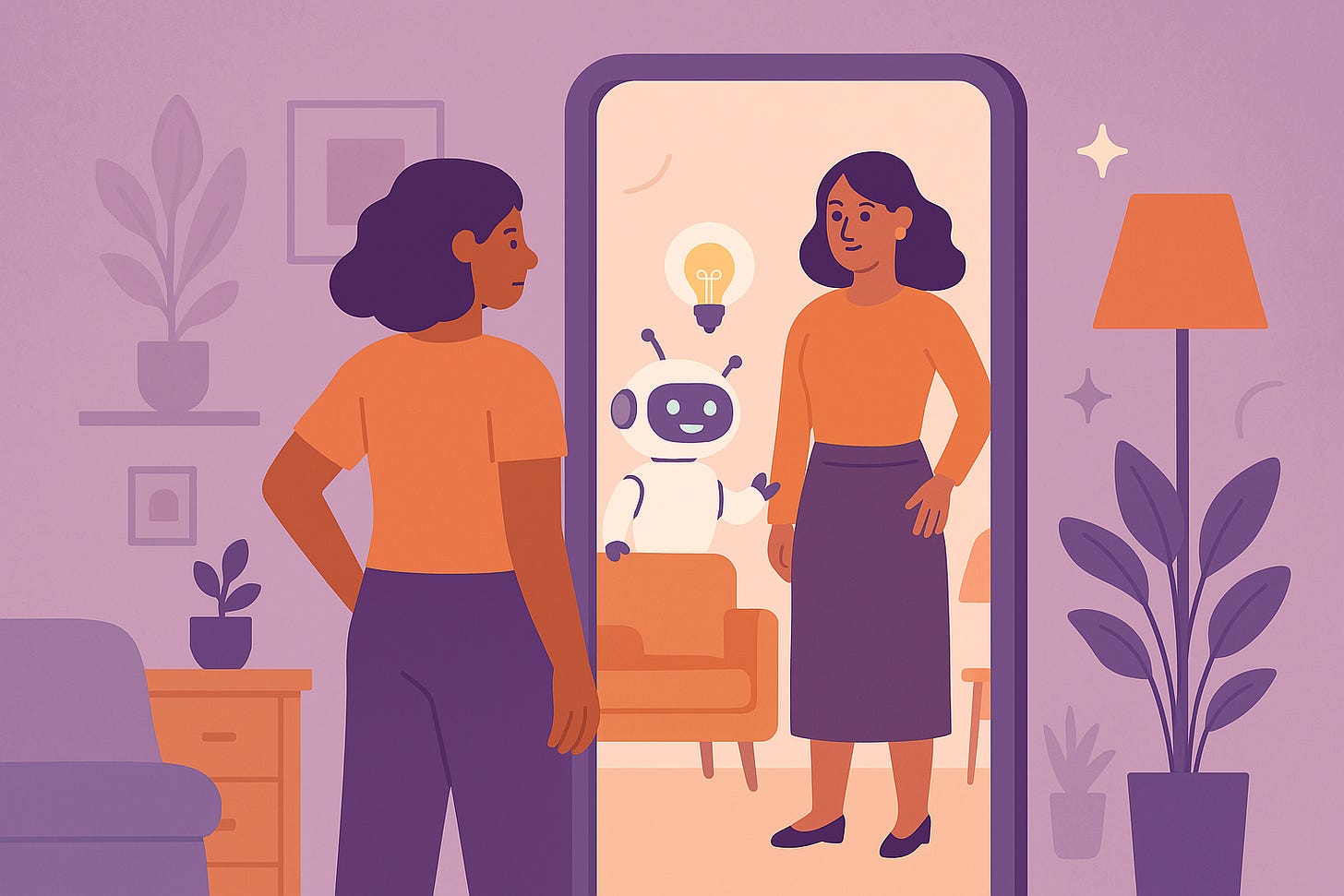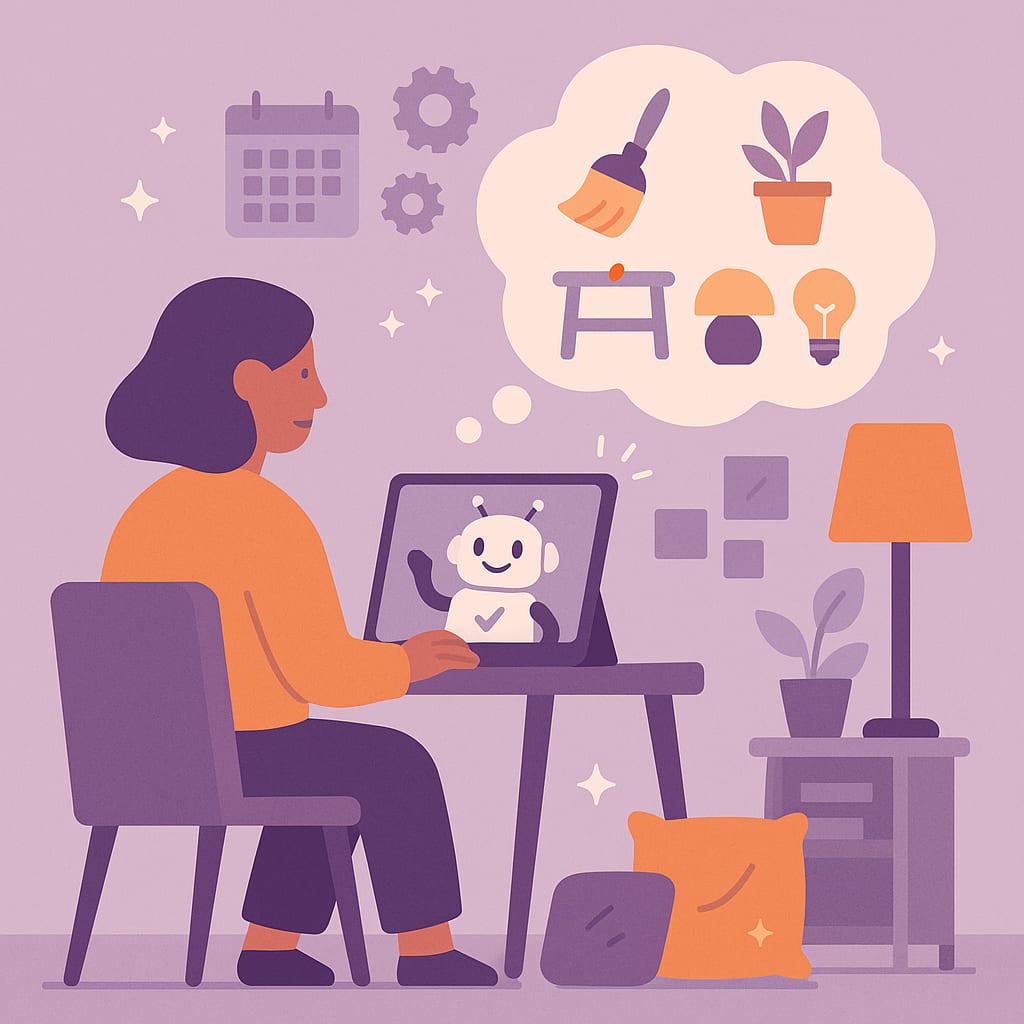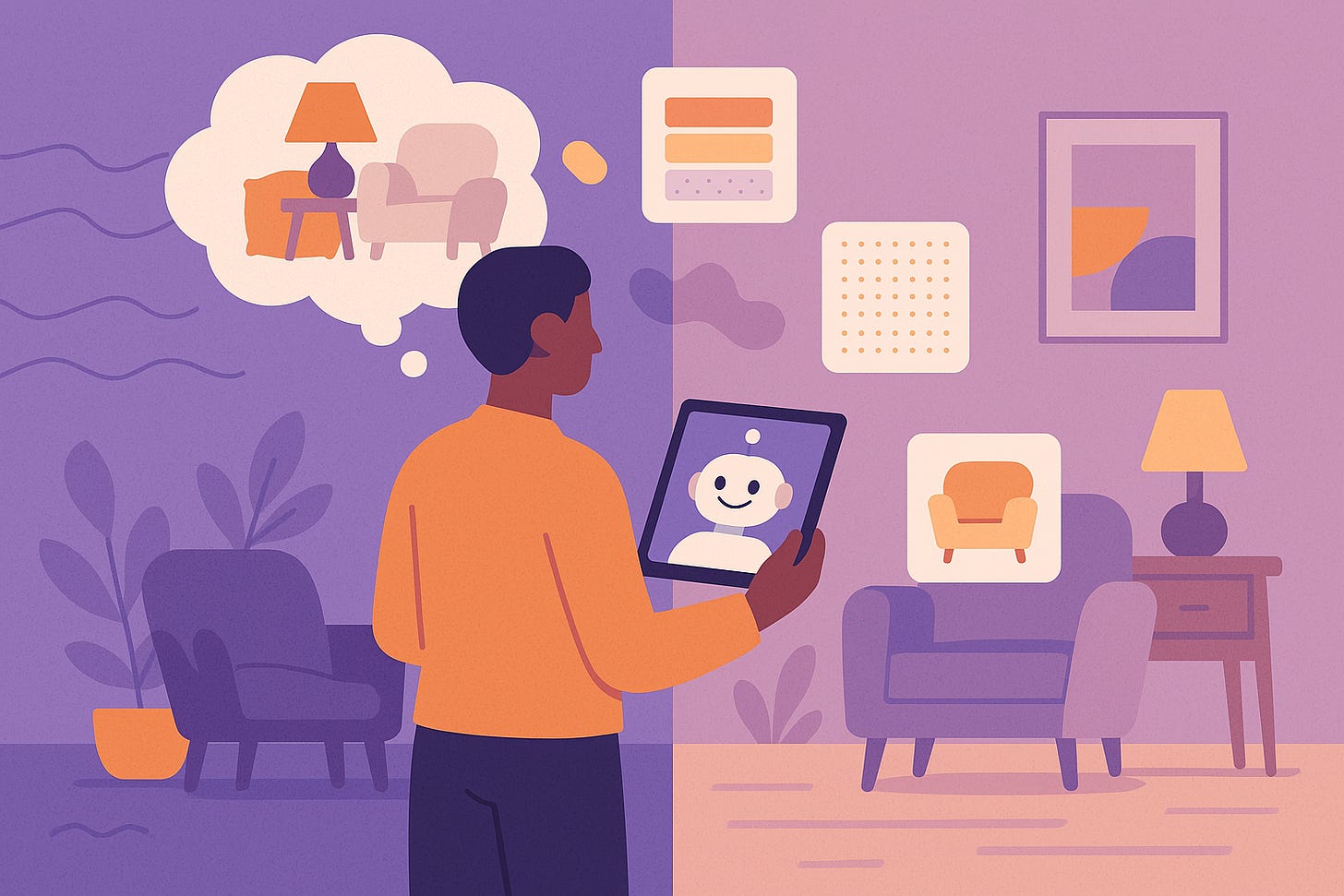AI Home Makeover: Easy Ways ChatGPT Can Help You Design a Home That Feels Like You
Use AI tools like ChatGPT to design a space that reflects your personal style and create a space you'll truly love.
First time here? This article might help:
Your home isn’t just where you live — it’s a reflection of who you are, and who you’re becoming. But when it feels out of sync with that version of you, it’s tough to feel fully at home.
The good news? AI isn’t just for spreadsheets and scheduling anymore — it can help you rethink your space. Not to make it perfect, but to make it feel more like you.
If that sounds a little out there, fair enough — not every tool clicks with every person. But if you’re curious, AI can be a surprisingly helpful way to rethink your surroundings. You’re still in charge. It’s just backup: like a sounding board, a style translator, and a planning buddy rolled into one.
So if your home’s vibe feels like it belongs to a past version of you, this might be your green light (and your co-pilot) to start shaping a space that actually fits the life you want to live — starting with free tools you can use today.
AI as a Mirror: Discover the You You’re Designing For
Before you change anything in your space, it helps to know exactly who you’re designing it for. Not guests. Not resale. You. The version of you your space should support, whether that means feeling more confident, grounded, creative, or all of the above.
That’s where AI can help. Tools like ChatGPT are surprisingly good at clarifying the vibe you’re going for — especially when the questions are tough to answer on your own, like:
“Help me describe the version of myself I’m trying to grow into —someone who feels more confident, grounded, and creative at home.”
“What kind of environment helps someone feel more confident, grounded, and creatively energized?”
This isn’t about chasing trends or picking the perfect aesthetic. It’s about pulling out the details that already resonate with you — and figuring out how to reflect them in your space, even if it’s just one room or one corner.
Start where it makes sense. You don’t need to know all the answers. You just need a starting point that feels honest.
AI as a Translator: Turning Feelings into Style
Once you know how you want your space to feel, the next step is turning that feeling into something you can see — colors, layouts, textures, patterns. You don’t need a design degree, just a little help turning your vibe into something you can actually see.
That’s where AI can really shine. Tools like ChatGPT can take emotional language — “calm,” “energized,” “cozy but not cluttered” — and turn it into specific, affordable design suggestions. You might ask:
“Give me affordable design ideas that feel calm, creative, and grounded — no full remodels, please.”
“What does ‘joyful but not cluttered’ look like as a room?”
“Blend mid-century modern with cottagecore in a way that feels relaxed but grown-up.”
These prompts can lead to unexpected results — ideas you might not have come up with on your own, but that still feel just right.
And if you're more visually minded, there are tools that can take things even further. Some AI tools (including ChatGPT with image features turned on) let you upload a photo of your space, wipe it clean, and reimagine it from scratch — layouts, colors, furniture — all visualized in realistic detail. TikTok creator CatGPT (@askcatgpt) showed this in action - a fun look at what’s possible when you mix AI with a little imagination.
That said, it’s worth remembering: AI is a tool, not a tastemaker. It can offer ideas and save you time, but it can’t tell you what feels right for you. Use it for inspiration and translation — and keep your own instincts in the driver’s seat.
AI as a Project Manager: Planning Your Refresh Without the Overwhelm
Knowing how you want your space to feel is one thing — making it happen is another. Ideas are fun. But putting them into action? That’s where things can stall. But AI isn’t just a brainstorming buddy — it’s surprisingly good at helping you turn ideas into action.
You can use it to sketch a weekend plan, brainstorm quick wins, or find creative ways to use what you already have. For example:
“Help me create a 2-weekend plan to refresh my living room for under $150.”
“What are five quick, low-cost changes I can make to feel more at home in my space?”
“Suggest ways to reuse or rearrange what I already have to better reflect my personality.”
It’s like having a no-pressure project manager on call. Need a shopping list? Done. Want to schedule tasks across a couple weekends? Easy. Not sure how to text your friend to come hang stuff (and maybe bring snacks)? It’s got your back.
You’re still in charge — AI just helps break things into steps that fit your life.
Conclusion
Your space doesn’t have to look like a magazine spread. It just has to feel like you — or the version of you you’re growing into. That might mean a small change or a full refresh. It might mean nothing right now, and that’s okay too.
But if something in you is ready for your surroundings to better reflect your life, AI can be a surprisingly useful co-creator. It won’t make the decisions for you — and it shouldn’t — but it can help you think through what matters, what’s possible, and how to take the next step.
Try a prompt and see what it sparks. Or just notice which parts of your space feel like you and which ones don’t…yet. Know someone whose home could use a little glow-up energy? Pass this along, it might be just the spark they need.





